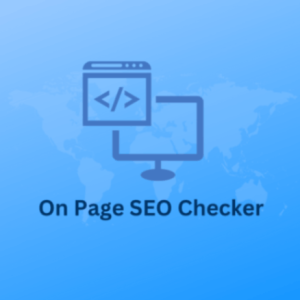On-Page SEO Checker
Analyze any web page for critical on-page SEO factors and optimization opportunities
Enter the complete URL including http:// or https://
SEO Score
Title Tag
Needs WorkMeta Description
GoodHeading Structure
AverageImage Alt Attributes
PoorContent Length
Keyword Density
Readability
Mobile Friendliness
Page Speed
SSL/HTTPS
Structured Data
Internal Links
External Links
Broken Links
How to Use Our On-Page SEO Checker
Improve your website's search engine visibility with our comprehensive on-page SEO analysis tool:
- Enter your page URL - Include the full address with http:// or https://
- Run the analysis - Our tool will check dozens of critical SEO factors
- Review the results - See which elements need improvement
- Implement recommendations - Follow our suggestions to optimize your page
Why Check On-Page SEO?
Higher Rankings
Optimized pages rank better in search results
More Traffic
Improved visibility leads to more organic visitors
Better UX
SEO improvements often enhance user experience
Competitive Edge
Outperform competitors with better optimization
Key On-Page SEO Factors We Check
Title Tags & Meta Descriptions
We analyze length, keyword usage, and effectiveness
Content Quality
Checking for depth, relevance, and keyword optimization
Heading Structure
Proper use of H1, H2, H3 tags for content hierarchy
Technical SEO
Page speed, mobile-friendliness, and security factors
Pro Tip: Regular SEO Audits
For best results with your SEO strategy:
- Run on-page checks quarterly for key pages
- Analyze competitor pages to identify opportunities
- Track improvements over time with our scoring system
- Focus on user intent as well as technical factors
Ready to Optimize Your Pages?
Start improving your search rankings with our free on-page SEO checker tool.
Keywords: free SEO analyzer, website optimization tool, page SEO audit, search engine ranking checker, content optimization tool, technical SEO checker

